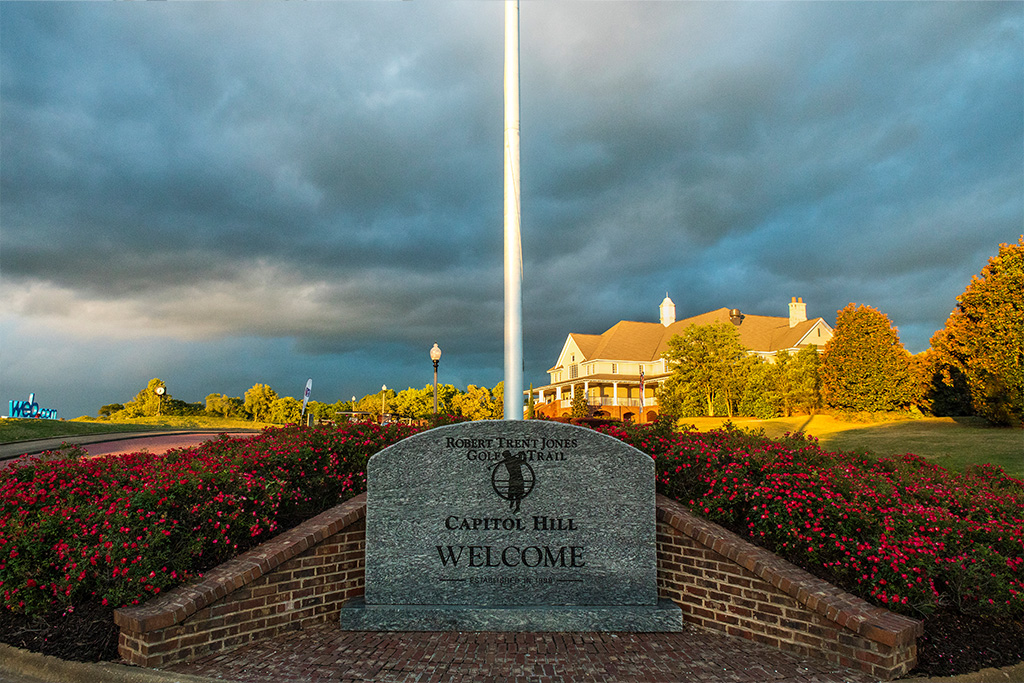Golf has been one of America’s most popular leisure activities for decades, and certain areas of the country have become synonymous with the sport—especially in the Southeast. Places like Hilton Head Island, South Carolina, Virginia Beach, and Augusta, Georgia, are just a few of the area’s uberpopular destinations.
But if you veer off a little to the west, you’ll also find a piece of golf heaven in the great state of Alabama. The Robert Trent Jones Golf Trail, named after the famed course architect, traverses the state from north to south. It offers 468 holes on 26 courses at 11 sites and, much like the state itself, has something for everybody.
Golf for good

Pictured above: Lakewood Club
The visionary behind the trail is Dr. David G. Bronner, A University of Alabama law school and PhD graduate. Bronner is also the longtime head of the Retirement Systems of Alabama (RSA), which funds the state’s public pensions. In 1980, he came up with an ambitious plan with a dual purpose—build an array of Alabama golf courses that would not only draw people to the state and boost its economy but also create a steady stream of revenue for those who benefit from the RSA.
But he needed to partner with someone who could design his courses. Enter Robert Trent Jones Sr.
Creating history

Pictured above: Capitol Hill
By the time this project was conceived, its titular architect was in semiretirement. The World Golf Hall of Famer had already designed or redesigned over five hundred courses around the world by that time, so he didn’t need to add to his resume. But he jumped at the opportunity to have an entire state—especially one like Alabama, which offers a myriad of landscapes—as a blank canvas. Bronner, Jones, and their respective teams worked together to make the Robert Trent Jones Golf Trail, the largest golf-construction project ever, a reality. Eight courses were opened by 1999, and three more were added between 2004 and 2005 after Jones had passed away.
The venture has been a major success, with golfers from all over the world having played an estimated twelve million rounds—about a half million rounds per year—since the RTJ Trail opened. But there’s more than golf along the way. You can tackle multiple courses while also enjoying the amenities at the several high-quality hotels, restaurants, shops, and spas strategically located across the state at each leg of the trail. With these funds, the RTJ Trail is able to not only turn a profit but also provide income to both the state’s pension funds and its tourism revenue, the latter of which soared to over $24 billion in 2022.
Eleven courses, endless challenges

Pictured above: The Shoals
When you travel to Alabama to take on this golf trail, expect your game to be tested: the longest hole length is over 700 yards, and the longest course is around 8,200 yards. Here’s an overview of each site, listed from north to south, to help you make your plans.
The Shoals, Muscle Shoals (36 holes)
If you like your links long, then the Shoals’ Fighting Joe course may be for you: it’s over 8,000 demanding yards, including a massive 716-yard hole.
Hampton Cove, Huntsville (54 holes)
One of Hampton Cove’s three courses is unique because it has zero bunkers—the only Jones-designed course in the world that’s bunker-free.
Silver Lakes, Anniston/Gadsden (36 holes)
All you really need to know about Silver Lakes is that it has courses named Backbreaker, Mindbreaker, and Heartbreaker.
Oxmoor Valley, Birmingham (54 holes)
Crafted in the Appalachian Mountains, Oxmoor is both scenic and, thanks to its wildly undulating elevations, quite challenging.

Pictured above: Ross Bridge
Ross Bridge, Hoover (18 holes)
Popular with golfers and golf editors alike, this jaw-dropping course—a mere five minutes from Oxmoor Valley—is the fifth largest in the world, topping out at 8,191 yards, and even boasts an 80-foot waterfall.
Grand National, Auburn/Opelika (54 holes)
Golf World readers named this must-play course the top public golf facility in the entire country.
Capitol Hill, Prattville (54 holes)
Coming right behind Grand National, Capitol Hill nabbed the number two spot nationally from Golf World readers.
Cambrian Ridge, Greenville (36 holes)
Cambrian Ridge is as challenging as it is scenic, and it hosts its popular Father/Son Championship each May.

Pictured above: Highland Oaks
Highland Oaks, Dothan (36 holes)
If you head to Highland Oaks, keep your driver handy—one of its courses, Marshwood, challenges you with a staggering 701-yard, par-5 hole.
Magnolia Grove, Mobile (54 holes)
Magnolia’s eighteen-hole courses are more player friendly, including its par-3 course, which Golf Digest named the best of its kind in the country in 2020.
Lakewood Club, Point Clear (36 holes)
The southernmost course on the RTJ Trail, Lakewood is also its most historical: it originally opened in 1947 and was later purchased and renovated by the RSA.
New in 2022

Pictured above: Oxmoor Valley
Always innovating, the Robert Trent Jones Trail opened a new course at Oxmoor Valley last year, The Back Yard. With a par-3, nine-hole layout, it’s designed for a casual, unique golf experience—complete with firepits and rocking chairs but without water hazards and golf carts. Stress goes out the window at the Back Yard, where the hole yardage ranges from a mere 59 yards to 132 yards.
Alabama may not be the first destination you think of when it comes to world-class golf, but it should be. Schedule your tee times for the Robert Trent Jones Golf Trail, and you’ll have a links adventure for the ages.
